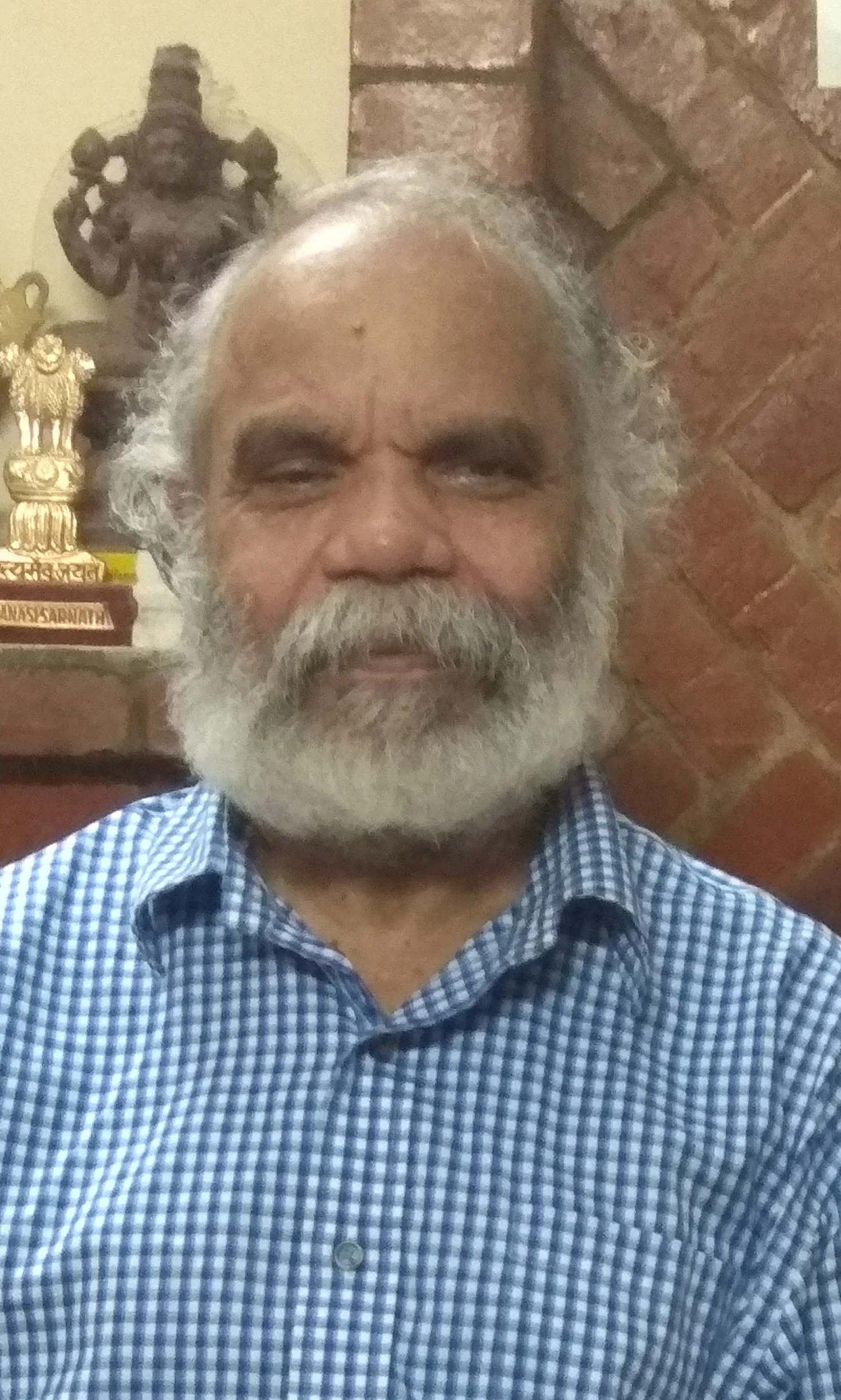
V P N Nampoori
Emeritus Professor, Cochin University of Science and Technology
November 7 of 2024 is the 136 th birthday of Prof C V Raman, Nobel Prize
winner in 1930 for his discovery of Raman Effect. It is timely to reread the life
and mission of the Indian great scientist as a national hero who spearheaded
the Swadeshi Movement in the field of science and Technology just like
Mahatma Gandhi lead Swadeshi Movement in the Social dynamics. The
present article is directed towards this aspect of the scientist’s life especially
when it is highly relevant when India seeks self reliance in all fields of
creative activities.
Henry Poincare, famous physicist of 19 th century, once said that the man of science observes
what Nature offers with the eye of understanding, but her beauties are not lost on him for that
reason. More truly , it could be said that the understanding refines our vision and heightens our
appreciation of what is striking and beautiful. The open book of Nature was read by Prof C V
Raman with the mind of an highly observant scientist. Once he remarked “ The face of Nature as
presented to us infinitely varied: but to those who love her, it is ever beautiful and interesting.
The blue of the sky, the glories of sunrise and sunset, the ever shifting panorama of the clouds,
the varied colours of forests and fields, the star sprinkled sky at night- these and many other
scenes pass before our eyes on the never ending drama of light and colour which Nature presents
for our benefits.” C V Raman liked to describe himself as an admirer of light, colour and
beauty.
To have a complete perspective, we outline the life and work of CV Raman in the context of the
above cited objective and will be an inspiration to the present generation of budding scientists.
The second half of 19 th century India gave birth to illustrious people like Gandhiji, Nehru, J C
Bose, S N Bose, C V Raman, Srinivasa Ramanujan, Tagore, Vivekananda, Paramahamsa who
created history of India in all walks of life. C V Raman’s was a blessed family : C V Raman’s
Sister’s ( Sita Laxmi) sons S Pancharatnam ( Theoretical Optics), who was described by his
uncle as a potential Nobel prize winner but died very young ,S Ramaseshan ( Crystallographer) ,
who later on became the Director of Indian Institute of Science Bangalore, S Chandrashekhar (
Liquid Crystal) who became the Director of Raman Research Institute, Bangalore and C V
Raman’s Brother’s son S Chandrashekhar ( Astrophysicist) who got the Physics Nobel prize in
- When Homi Bhabha and Vikram Sarabhai returned to India after their training abroad, and
approached C V Raman to work under him, the senior scientist advised them to initiate Atomic
Energy and Space Research establishments in India which will contribute to the development of
the nation. The vision of C V Raman became instrumental for the establishment of two strong
pillars’ of the edifice contributing to the nations glory.
Born on 1888, Nov.7 at Tiruchirappally as the second of eight children of R
ChandraShekhar Iyer and Parvathi Ammal, Chandra Shekhara Venketa Raman passed
matriculation at the age of 11, FA at 13, BA at 15 and MA at 18, all at the highest ranks.
By the time he completed MA in 1907 from the Presidency College, Madras, Raman has
already authored two research papers in the prestigious Philosophical Magazine shortening
his tongue twisting name to CVRaman
Due to health problem, Raman was denied the opportunity to study abroad. He
wrote the competitive examination of finance department and toped the list. In1907 he
was appointed as the assistant accountant general at Calcutta. Before atching the train to
Calcutta the 13 year old Loka sundari walked in to the life of C V Raman. Within one
week of shuttling back and forth between the home and the office at Calcutta, Raman
made a remarkable discovery-the Indian Association of Cultivation of Science at 210,
Bowbazzar Road of Calcutta. It was a heart-touching scene. On knocking the door of
IACS building, a young man called Ashuthosh Dey appeared in front of Raman- a
historical meeting indeed, since later on for about 25years of scientific pursuit Ashu Dey
was going to be Raman’s right hand.
From 1907 to 1919 Raman studied the acoustic properties of Indian musical
instruments. Scientific journals like Nature, Philosophical magazine ,Physical
Review started printing the name of Raman and the Association at a regular basis.
Mahendra Sircar’s Association became world famous. The purity of sound from ekthara,
acoustic difference between thambura and veena etc were the subjects of investigation
carried out by Raman. Raman found their secrets by conducting a series of experiments.
Raman and Ashu Babu even constructed a self working violin using discarded components
available in the market shops.
1916 was the year which created a turning point in Raman’s life. In that year Ahuthosh
Mukherjee became the VC of Calcutta University. He invited Raman to take up the Physics
professor’s post and strengthen the science education in Calcutta University. Without a
second thought, he threw away the job in Civil Service and accepted the invitation of
Ashuthosh Mukherjee. Then came an unexpected blow. The funding agency which finance
the Palit Professorship has laid a condition of foreign experience for the candidate. Raman
has not even put his feet on a foreign soil. As a solution authorities advised Raman to avail
two months’ experience in any foreign labs. Raman did not accept. He replied “I can train
foreigners in my lab if they want” As a special consideration Raman was made the Palit
Professor of Cacutta University.
Raman was arranging conducted tour for students to the infinite landscape of Nature with
Physics as the vehicle.. Calcutta University became the dream world of meritorious students
like K R Ramanathan from Trivandrum, K S Krishnan from Madras, Bhagavantham
from Andhra. Many came from the nook and corners of India to accept the discipleship of
Raman. Following the death of Amrithlal in 1919 .Raman became the Secretary of the
Association. IACS echoed with enthusiasm and noise 24hours a day. During this Period
Raman and his group were slowly sliding to the rich fields of light and colour
The first foreign trip of Raman was in 1921-to take part in a conference at Oxford. During
his return journey, the deep blue of the Mediterranean Ocean tickled the scientific mind in
Raman .He did some observation of the blueness of the waters using his nicol prism which
he always carries. He found that the blueness of the ocean is not due to reflection of sky as
Rayleigh thought but is due to light scattering of sun light getting diffused into ocean
waters.
By 1923, Raman and Ramanathan started studying the scattering of X rays from liquids. It
was during this time that Compton discovered the wavelength shift in X-rays due to
scattering by electrons. Raman immediately scaled up the phenomenon of Compton effect
and argued that similar phenomenon will occur for light scattering by molecules. By this
time Raman and Ramanathan discovered X- ray fluorescence from organic liquids.
In1924, FRS came in search of Raman. During a reception party Asuthosh Mukerjee asked
“Professor Raman, what next?” Answer was spontaneous “why, of course Nobel Prize
itself.”
Day and night were spent by Raman and his students in the lab from 1924 onwards.
Towards the end of the hectic period the mood acquired the climax as NP Of 1930
went to C VRaman , the first Indian and the first Asian to receive the dream prize.
The NP ceremony took place at Stockholm on 10 th Dec1930 between 4and7.30pm.
Since two Americans were also in the list advisor of US A were also present in the
hall. He wrote to USA:
“Of all the Nobel Laureate much attention was focused on to Sir Venketaraman, the Indian
winner. After receiving the prize from the king, CVRaman returned to his seat visibly
moving with emotion. Tears streamed down from his eyes. During the dinner, Raman’s
speech was amasterpiece. Everybody in the hall gave a big applause to CV Raman fter his
speech. The only one annoyed at least a little was the British ambassador near my seat since
Raman referred to his friend in jail whoSend greetings to him telegraphically”
Now listen Raman’s words:
“On returning to my seat I saw the ocean of white faces all around me. Here, I, a loner, an
Indian with the coat and turban. I Really felt to be representing my Country and my
people. I felt humble while receiving the prize from King Gustov- moments of up tide of
emotion-I controlled myself. Then, I turned around. I was sitting below the Union Jack. On
realizing this I remembered -my poor country India does not have even her own flag. This
realization broke myself control.”
It was at that time in 1933 when the Science & Technology institution at Bangalore
founded by Tata, which later on became Indian Institute of Science, was looking for a
new director.. From the beginning itself, directors of the institute were used to be British
and the Committee contacted Rutherford in England. He asked “Since in India itself has the
most appropriate person why waste time searching in England?” In1933Raman became the
first Indian to become the Director of the Tata Institute
Due to some unfortunate local politics, within three years, Raman had to
resign from the Director’s post. However, he continued to be the head of the Physics dept
till his retirement in1948. Raman molded outstanding physicists in Bangalore also.To cite
examples, Nagendranath, Pncharatnam, PRPisharoty, RS krishnan, GRamachandran.One
of the important discoveries during this period was Raman-Nath effect which has recently
applied in FEL. Phenomenon of geometrical phase in polarized light discovered by
Pancharatnam has recently rediscovered by Michael Berry and is now commonly referred
to as Berry’sPhase
2 nd world war made scientists to leave Germany .Raman wanted to bring stalwarts like
Born, Schrodinger, Oppenheimer etc to India. In fac t Born stayed in Bangalore as a guest
of Raman for sometime. However, the adverse atmosphere prevailing in the Institute and in
the country made Raman to fail in this mission .Otherwise, India could have been the
gravitational center of Modern science and
Could have regained the ancient glory In1934, Raman established the Indian Academy of
Sciences. During1934-54 periods, the Indian Academy Proceedings were considered to be
one among the top research journals allover the world. Majority of Raman’s papers appeared
in this proceedings.
After the retirement from Indian Institute of Science, Raman established a research
laboratory ,which is now called Raman research Institute in Bangalore with the help of the
Maharajah of Mysore and his own friends, The RRI is in perfect blend with surrounding
trees and bushes and is an important landmark of Bangalore. RRI’s future expansion
should be without destroying its rhythm with nature ,thus wrote Raman in his will. Later on
during 1990s RRI constructed an optics lab surrounding an old tree underneath of which
students and teachers discuss latest in Physics research. Once Raman remarked “ This is
happiness , that we should be alive, and that should be endowed by Nature the faculty to
perceive this feeling of vision of beauty – this is happiness indeed.”
Towards the twilight of his life, Raman was melancholic and sad. He used to say that
in life he was an utter failure. In the evening he used to take around the children in RRI
campus in which he found immense pleasure. After 1948, every year Raman used to give
Gandhi Memorial lecture on Oct2 through the AIR. On the October 2 nd of the year 1970 ,
the country heard the last of Gandhi Memorial lecture by Raman. In an evening of
Nov1970, Raman fell unconscious in his lab. After two weeks, on Nov21, 1970 he got
dissolved into the Varnaprapancha-the universe of colour-leaving about 310 varieties of
diamonds, gems and stones to the future generations.
It might have been the starting point of a Mahaprasthan- thegreat journey-of a pure
soul. Following his wish, the compound of RRI became the resting place of Prof
CVRaman- the final resort of the great son of India-sans celebration, sans memorials sans
anything except a lone tree on the green Spread ,standing upright looking directly above
waiting for the whispering of a mild wind and showering flowers on to the meadow
underneath.
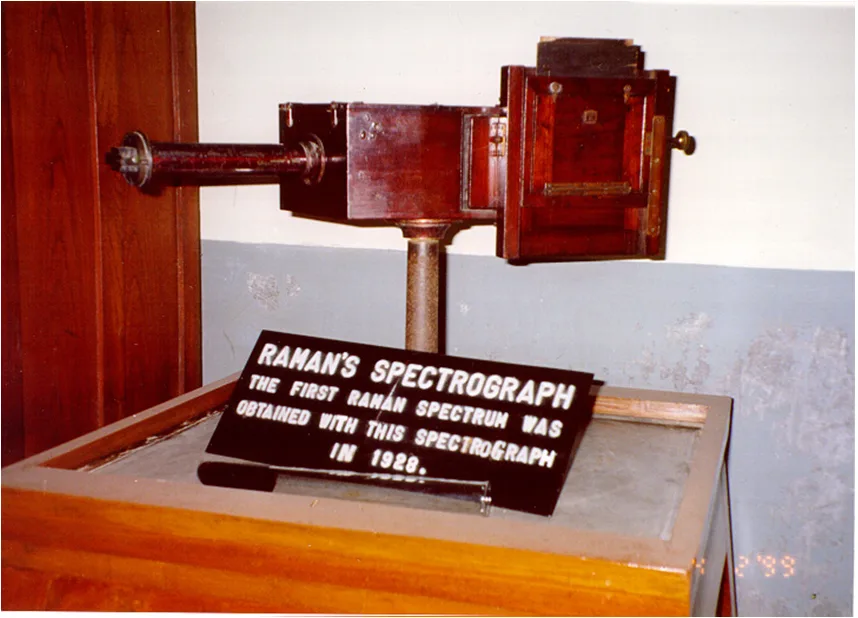
market. The Nobel prize work was carried out using this equipment.
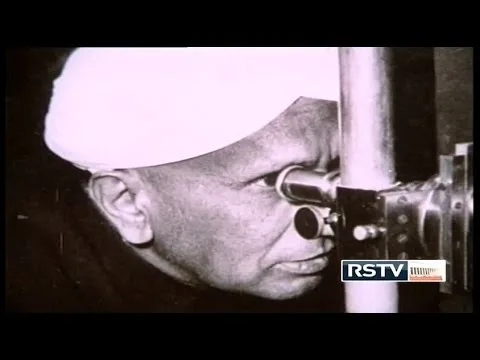
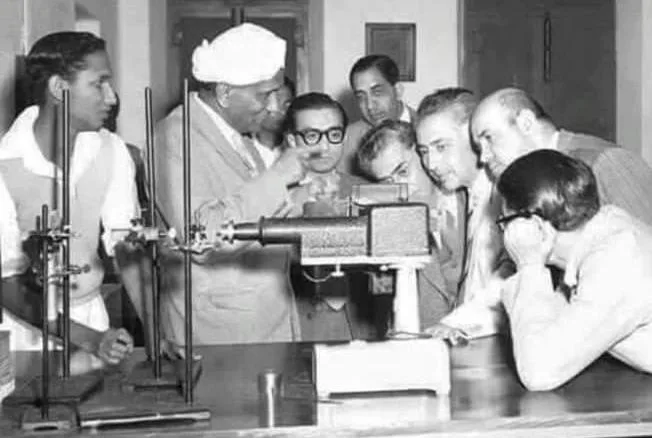
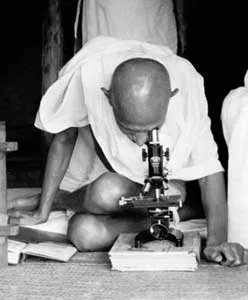
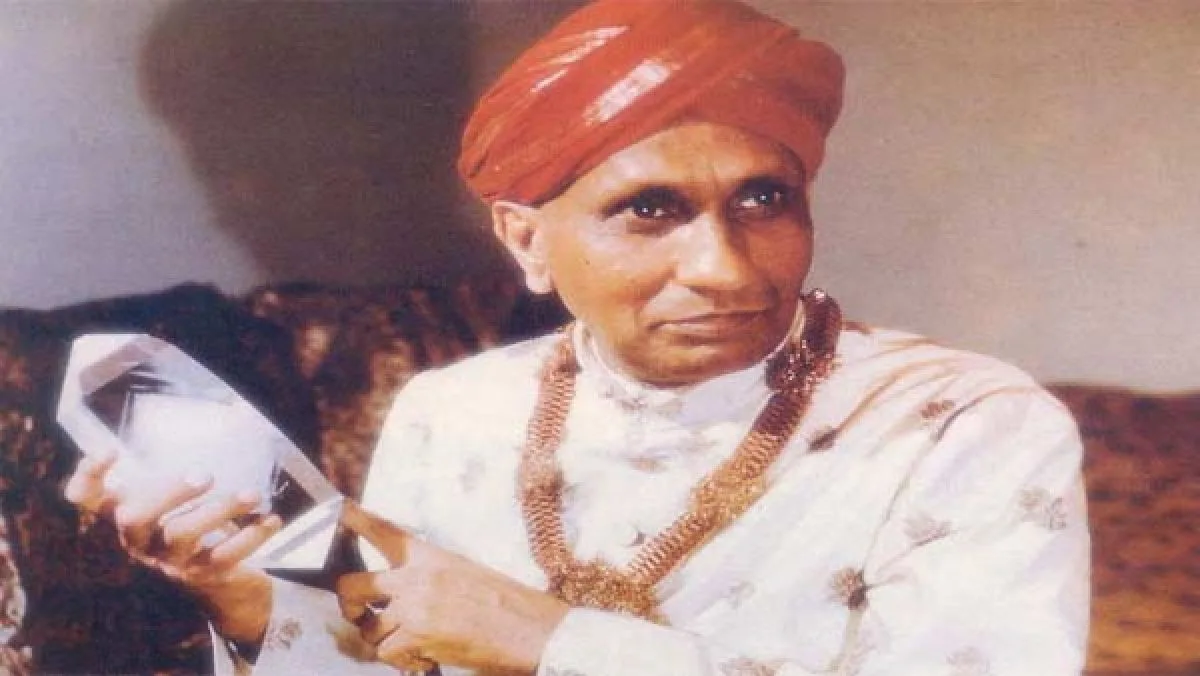
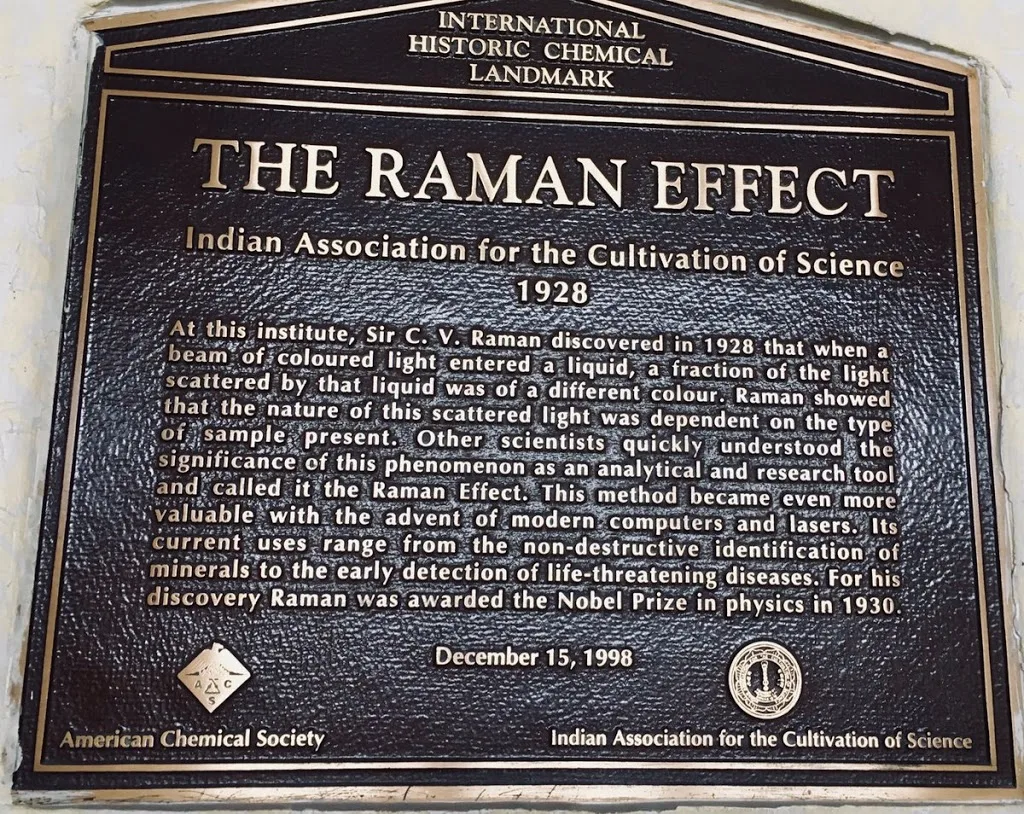
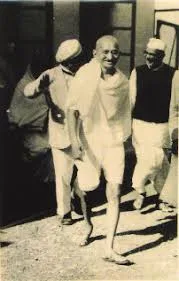
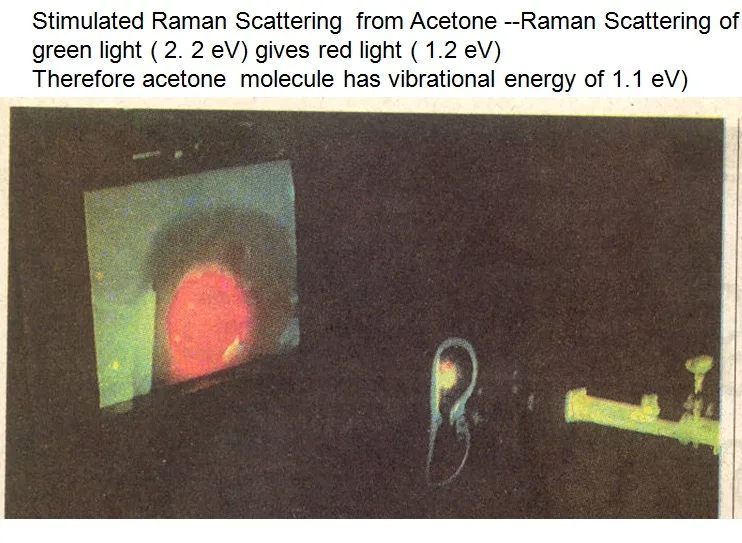

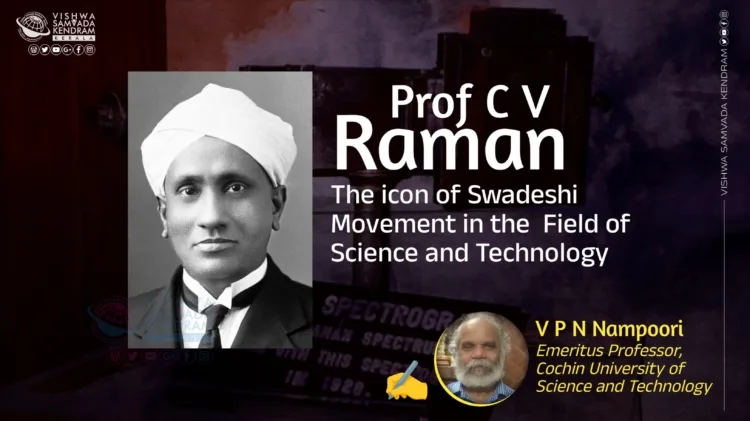


















Discussion about this post